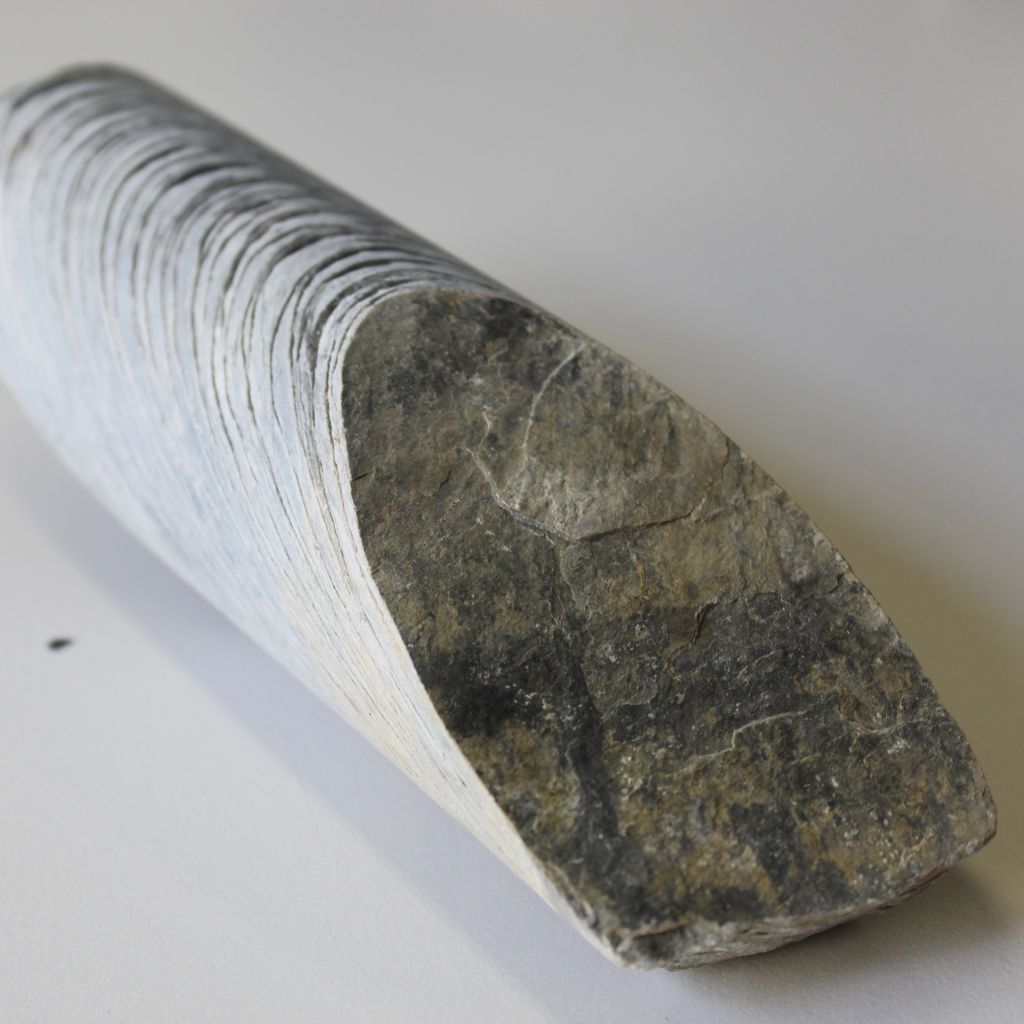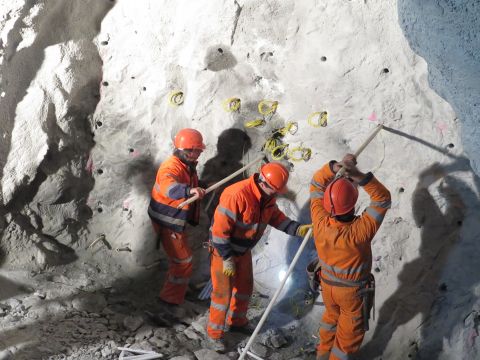Allgäu slate

The Allgäu slate was in the historical reports described as platy limestone and clay and was discovered to be of soft and in the first half of the penetration solid and unproblematic material. In the second half however, the inflowing water increased heavily and every new drilling hole represented a new water spring.
|
Location |
|
|
|
10 m from the Preda tunnel entrance |
|
|
|
|
|
|
|
Length |
|
|
|
1,127.5 m |
|
|
|
|
|
|
|
Characteristics |
|
|
|
Allgäu slate consists of alternating grey to blackish-grey deposits of light metamorphic clay and marlstone with layers of limestone. There are, at a microscopic level, alternating strata of fine-grained calcite and layered silicates. |
|
|
|
|
|
|
|
Faults |
|
|
|
The final 250 metres of Allgäu slate are heavily fissured, and were identified in the historical documents as a major source of inflowing water. We can assume that this fissured zone in the Allgäu slate overlay of the Raibler cellular limestone dates back to the original formation of the Alps. |
|
|
|
|
|
|
|
Hazards |
|
|
|
Inflowing water at rates of more than 10 litres per second can be expected in the fissured zone. The transitional area with respect to the Raibler cellular limestone is likely to suffer even more flooding. Small (< 0.2 m3) and medium-sized (0.2 – 1 m3) breakthroughs are also likely throughout the Allgäu slate, given the strong separation between layers and cleavage of the slate. Allgäu slate may also contain natural gas. However, given the absence of indications or accidents of any kind in the historical accounts, this probability can be regarded as rather low. |

